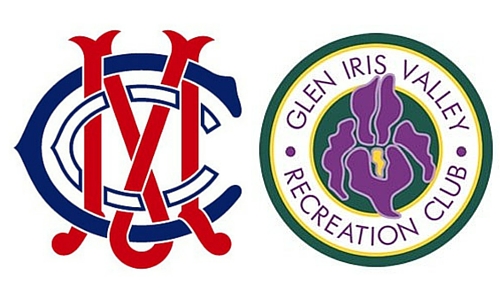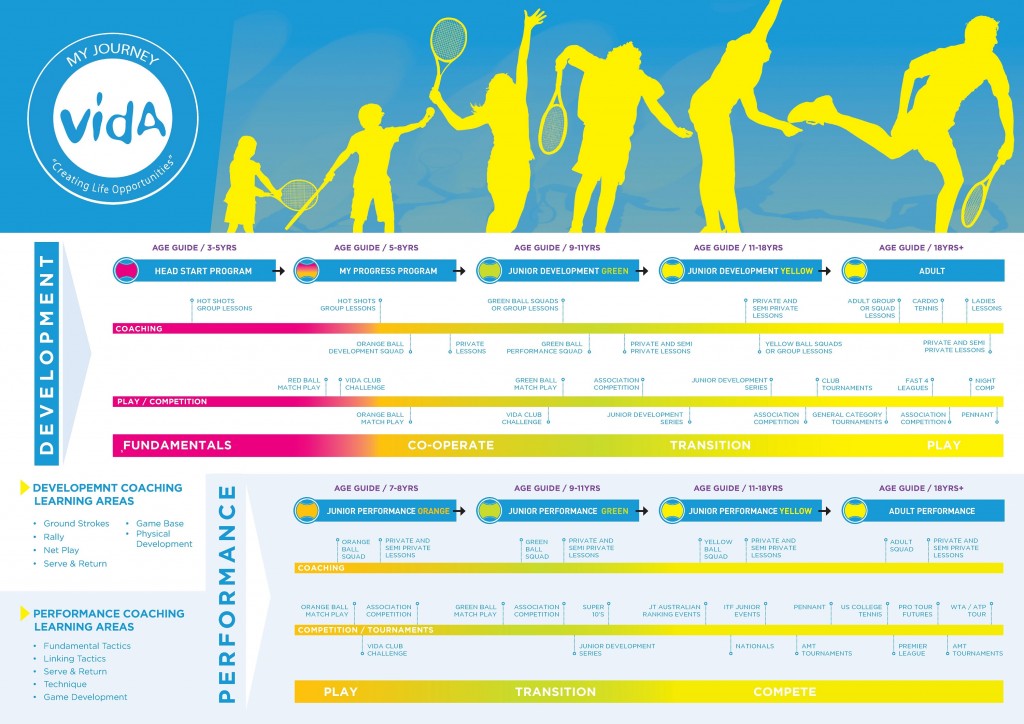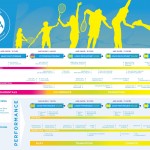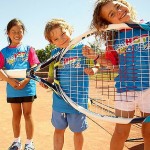This is a questions that we coaches get asked a lot! At what age can my child start tennis lessons?
Your child can start tennis from as young as 3 years old in lessons aimed at fast tracking Motor Skill Development. The aim for kids starting tennis lessons at this young age is to develop the building blocks of sport, physical activity and child development. Generally lessons for this age are 30 minutes in duration and educates the kids by:
- Learning in a fun environment: Fun is the most important aspect of being on the court. Kids need to feel comfortable in their environment and wanting to come back and learn more.
- Socializing with other kids during physical activity: Group lessons average four kids per session which encourages the kids to socialize with other children who are interested in tennis. This also helps teach the kids listening, cooperation and other important life skills.
- Developing important Motor Skills such as -Locomotion and Balance, Catching and Intercepting, Throwing and Striking, Kicking and Punting:“Physical development provides children with the abilities they need to explore and interact with the world around them” (Kidspot). Developing these Motor Skills at a young age prepares the child for future sports but are also lifelong skills to be used throughout your child’s life
- Modified courts and equipment: Lessons are on a modified size court with a miniature net and soft hot shots tennis balls. This is less intimidating and encourages the kids to have a higher success rate.
- Incorporate all of the above while learning the first steps of tennis: Learning tennis is why you signed up! Incorporating the above and linking to tennis activities lets the child enjoy the basics of tennis at the same time.
The Vida Head Start Program
The Vida Head Start stages are designed to develop and master fundamental perceptual motor skills, the building blocks of sport, physical activity and child development. These don’t develop automatically. Children without FPMS are severely disadvantaged when it comes to the sport, physical and psychological experiences they will enjoy during a lifetime. Through early purposeful play experiences, children will develop the sensory and movement abilities to; locomotion & balance, catch, track & intercept, throw, kick and strike, cognitive development and therefore have every opportunity to develop a love of sport, health and fitness. Each activity will use a combination of some or all FPMS at any one time, and have a link to the game of tennis, to help the child transition into the next stages of their “my Vida journey” program.
The program has four levels which are structured around four key developmental areas;
- Throwing, Kicking & Striking.
- Catch, Interception & Tracking.
- Locomotion, Balance & Agility.
- Cognitive Development.
Once the child has completed the first objectives in each of the four developmental areas they will receive their 1/4 certificate. Each Head Start level guides the child further towards mastering their FPMS and achieving their FULL Head Start Certificate.
Check out more information on this program – CLICK HERE
What are Fundamental Perceptual Motor skills?
The easiest way to understand fundamental perceptual motor skills is to understand the different parts.
- Fundamental – the foundation, base or essential component of a structure or system
- Perceptual – the recognition and interpretation of sensory stimuli
- Motor – referring to motion or movement
- Skill – proficiency that is acquired through training or experience
Fundamental perceptual motor skills can therefore be summarized as the foundation skills of being able to use sensory information to accurately carry out purposeful movements.
Fundamental perceptual motor skills can be broken into four categories:
- Locomotion and Balance – Locomotion is the ability to move from one position to another and these can take many forms such as crawling, walking, running or hopping. Balance refers to the ability to maintain a state of bodily equilibrium or the desired static position or position during movement.
- Catching and Interception – Catching is stopping a moving object in the hands or arms. Interception is stopping an object like a ball without actually holding it. For example, heading the ball or blocking a ball with the chest in football.
- Throwing and Striking – Throwing is to propel an object through the air with the motion of the arm or hand and this can be in the form of underarm, sidearm or overarm. Striking is the act of contacting an object either stationary or moving, with either the hand or implement in a hand or hands such as a bat.
- Kicking and Punting – Kicking is to propel an object such as a ball which is stationary or oncoming through the air with the motion of the foot or leg and punting is the same motion with the ball being dropped from the hands.
Although they are not separate, because to kick, you need to be able to intercept it and to intercept it, you need to be able locomote. But it does make it easier to think of fundamental perceptual motor skills in these categories.





Leave a Comment